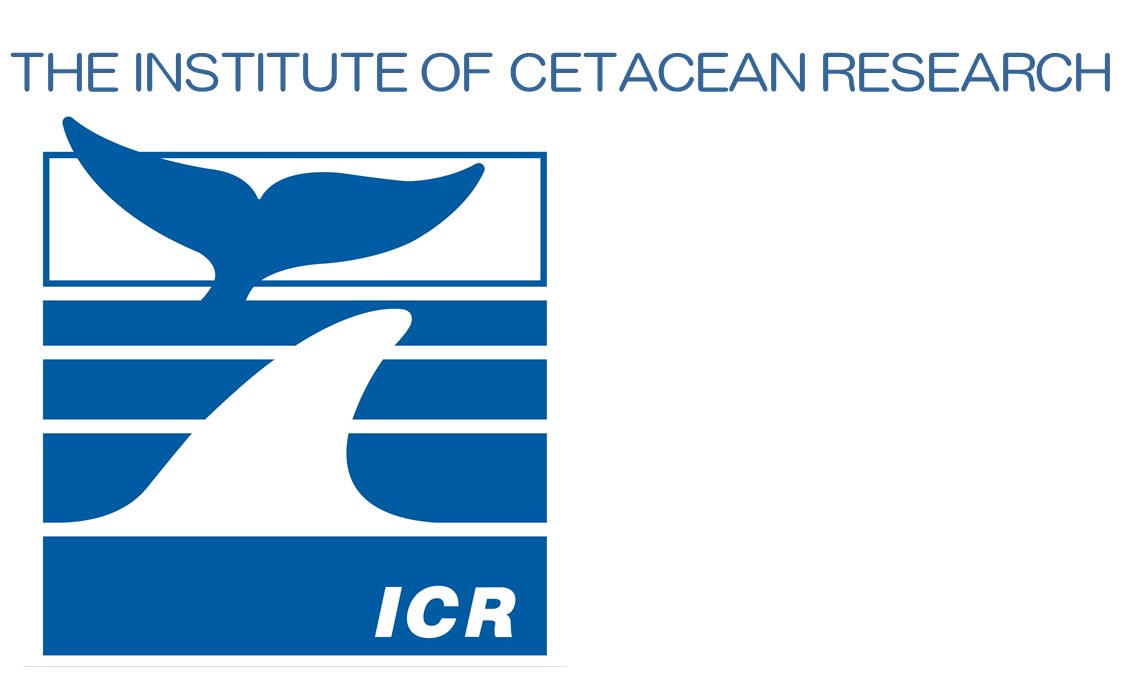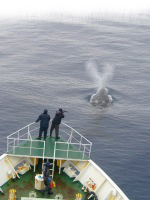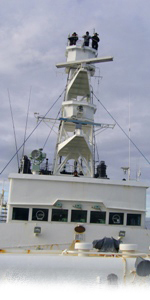- You are here:
- Home>
- English Sitemap>
- RESEARCH>
- Past Research>
- Antarctic Ocean>
- NEWREP-A
NEWREP-A (New Scientific Whale Research Program in the Antarctic Ocean) -Outline
NEWREP-A was developed by the Institute of Cetacean Research (ICR) following the guidelines for the design and implementation of whale research programs under Article VIII of the International Convention for the Regulation of Whaling (ICRW), in the Judgement of the International Court of Justice (ICJ) on the case ‘Whaling in the Antarctic (Australia v. Japan)’. These guidelines were the following: (i) programs should be designed to investigate the feasibility of some non-lethal techniques that potentially can provide relevant data for the program; (ii) the annual sample sizes for the lethal sampling should be calculated using a more transparent and defensible mathematical model; (iii) a plan should be designed in case the target sample sizes could not be obtained; (iv) the time span of the program should be determined; (v) the number of scientific documents presented to meetings, and the number of publications should be increased; and (vi) the plan should be designed to increase collaboration with research organizations engaged in ecosystem research.
Objectives
The research objectives of NEWREP-A were aimed at preparing for the scenario of future sustainable commercial whaling on Antarctic minke whales under the International Whaling Commission (IWC)'s Revised Management Procedure (RMP). The two main objectives of NEWREP-A below reflected research needs identified by international organizations responsible for the conservation and management of marine living resources, such as the IWC and Convention for the Conservation of Antarctic Marine Living Resources (CCAMLR).
Main Objective 1
Improvement in the precision of biological and ecological information for the application of the RMP to the Antarctic minke whales
At the time of the design of NEWREP-A, the IWC SC was working on several general and Implementation-related issues on implementing the RMP, and NEWREP-A was designed to contribute to this process with the focus on the Antarctic minke whale, taking into account the results from JARPAII and much of its rationale.
Main Objective 1 had four components:
(a) abundance estimation;
(b) improve estimation of biological and ecological parameters;
(c) refinement of stock structure hypotheses; and
(d) specification of RMP/ISTs and Implementation.
These components had sub-objectives with appropriate timelines for presentation of results.
Main Objective 2
Investigation of the structure and dynamics of the Antarctic marine ecosystem through building ecosystem models.
This objective was established not only to improve general understanding of the structure and dynamics of the Antarctic ecosystem following the finding of JARPAII but also to provide information useful for management and conservation in the context of a multi-species approach. The principle of multi-species management has been discussed, accepted, adopted and recommended by many international organizations, including the Food and Agriculture Organization (FAO) of the United Nations. Both the IWC and the CCAMLR give particular importance to the ecosystem approach as a tool for conservation and management.
Main Objective 2 had five components:
(a) study of krill abundance and oceanography;
(b) abundance estimation for key species in the ecosystem;
(c) investigation of prey consumption and nutritional condition of whales;
(d) ecosystem modelling (spatial interactions).
(e) ecosystem modelling (ecosystem dynamics).
These components had sub-objectives with appropriate timelines for presentation of results.
Research area and period
NEWREP-A was planned for a finite period of 12 austral summer seasons with a mid-term review after the first six years. In practice, it was conducted for only four seasons (2015/16-2018/19). It was halted when Japan withdrew from the IWC in 2019. The research area included Areas III, IV, V and VI (see figure below), with different longitudinal sectors covered in each year following a pattern similar to JARPA and JARPAII.

Sample sizes and actual catches
The annual sample sizes and the actual catches of NEWREP-A are shown in the table below.
| Season | Sample size | Catches |
| 2015/16 | 333 | 333 |
| 2016/17 | 333 | 333 |
| 2017/18 | 333 | 333 |
| 2018/19 | 333 | 333 |
Review of NEWREP-A research proposal and results
The original research proposal of NEWREP-A was reviewed and commented during the 2015 Panel workshop under the IWC SC ‘New Review Procedure’. This new procedure was developed by the IWC SC in 2008 to increase the level of consensus. The most important component of the new procedure was an Expert Panel workshop, with specific Terms of References for both review of new proposals and review of research results from existing and completed special permit research programs. The workshops had open and closed sessions and scientists from the Contracting Government participated only in the open sessions to present research proposal and results, and to answer points of clarification from the Panel.
The report of the Panel workshop was presented to the 2015 IWC SC annual meeting (Doc. SC/66a/Rep6).
There was no IWC SC review of NEWREP-A research results as the program was halted prematurely in 2019.
The NEWREP-A program was started in the austral summer season 2015/16 and was planned for a total period of 12 years.
The design of NEWREP-A followed the guidelines offered by the International Court of Justice’s Judgement on the Antarctic Whaling case.
The program, however, was halted prematurely after season 2018/19 because of Japan’s withdrawal from the IWC.
The main research objectives of NEWREP-A aimed in preparing the scenario for future sustainable commercial whaling by Japan on Antarctic minke whales.
They were focused to improve the precision of biological and ecological information for the application of the RMP on this species, and to investigate the structure and dynamics of the Antarctic marine ecosystem with the final aim of collecting relevant information for the future application of multi-species approach for management.
The annual proposed sample size for the lethal component of the NEWREP-A was 333 animals.
The NEWREP-A proposal was duly reviewed and commented by the IWC SC through a specific workshop.
Further reading




